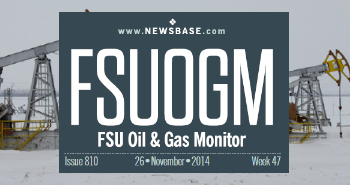FSUOGM: Russian energy export revenues up 40% in May despite sanctions
_2.jpg)
Russia’s revenue from energy exports in the first 100 days of the war amounted to €93bn, according to a study by the Helsinki-based Centre for Research on Energy and Clean Energy (CREA), and the EU remains the largest buyer of Russian gas and oil, even after the sixth package of sanctions that target energy was put in place.
Despite the West’s push to phase out Russian energy imports and deprive the Kremlin of money to finance its war in Ukraine, the country’s export revenues were in fact up by almost 40% year on year in May, on the back of soaring global prices, data published by CREA shows.
The EU is making a concerted push to sever energy ties with Russia over its actions in Ukraine, having already introduced a ban on coal imports from the country and agreed an embargo of up to 90% of oil supplies by the end of the year. While reluctant to take similar steps regarding Russian gas, the European Commission is calling for member states to make drastic cuts to gas use and increase imports from alternative suppliers under the REPowerEU plan, which it says could result in a two-thirds reduction in Russian gas deliveries to the bloc by year-end.
However, the report by CREA starkly indicates how much money the EU continues to hand over to Moscow in return for fulfilling its energy needs. Out of the total of €93bn ($97bn) that the country earned on fossil fuel exports, the EU accounted for €57bn, or 61%. The bloc contributed 85% of Russia’s revenues from pipeline gas exports, 75% of its revenues from oil product sales, 75% from LNG, 50% from crude oil and 30% from coal.
Russian energy imports were significantly affected in May by disruptions and heavy discounts to its crude oil exports, as well as a cut in gas supply volumes, following Gazprom’s decision to cut off supply to nine buyers in Bulgaria, Denmark, Finland, Germany, the Netherlands and Poland. Those countries had refused to comply with a Kremlin decree that required them to make their euro and US dollar-denominated payments to accounts set up at Gazprombank, to be converted into rubles before transfer to Gazprom.
Nevertheless, Russian hydrocarbon export revenues rose by nearly 40% y/y in May to €883mn in May. This was €43mn more than Russia is estimated to be spending on its war in Ukraine.
The reduction in volumes shaved €95mn off Russia’s daily receipts, and the discount on Russian oil wiped off a further €95mn. But these factors were more than offset by the €443mn growth in receipts that resulted from higher hydrocarbon prices. Revenues were down from an average of €1.1bn per day in January and February, although seasonality was a major cause of this decline.
On a country-by-country basis, the largest dents to Russia’s revenue stream were made by Poland and the US. Percentage-wise, sharp reductions were also achieved by Lithuania, Finland and Estonia.
If you’d like to read more about the key events shaping the former Soviet Union’s oil and gas sector then please click here for NewsBase’s FSU Monitor.


Follow us online